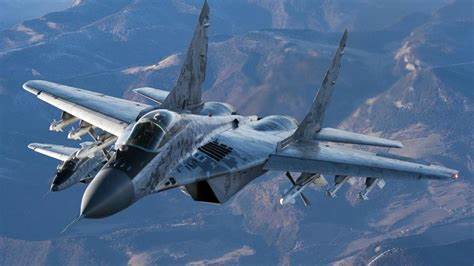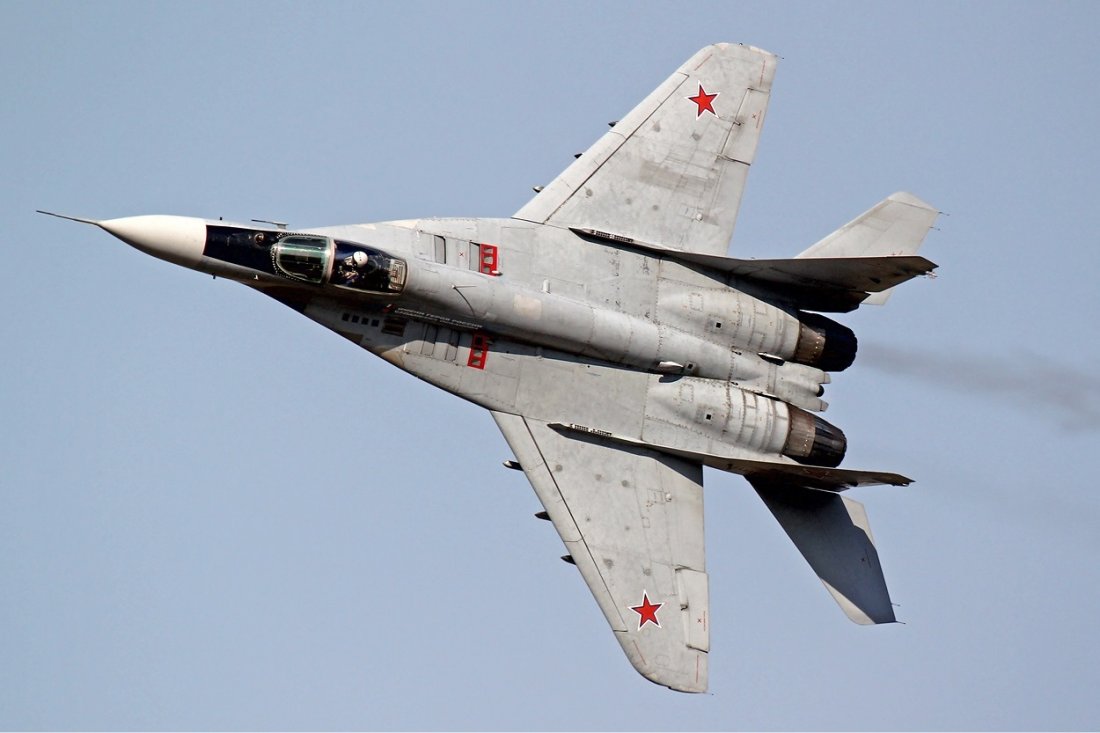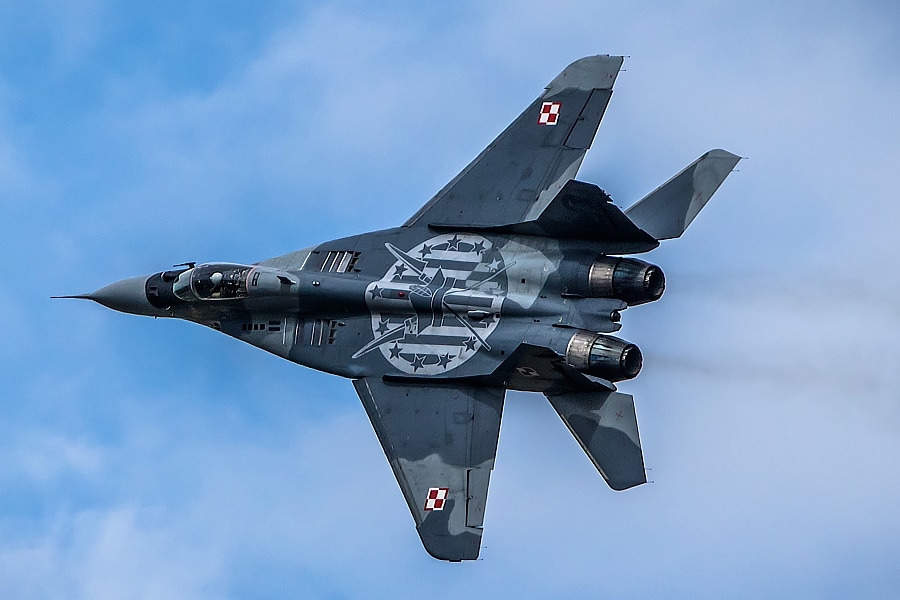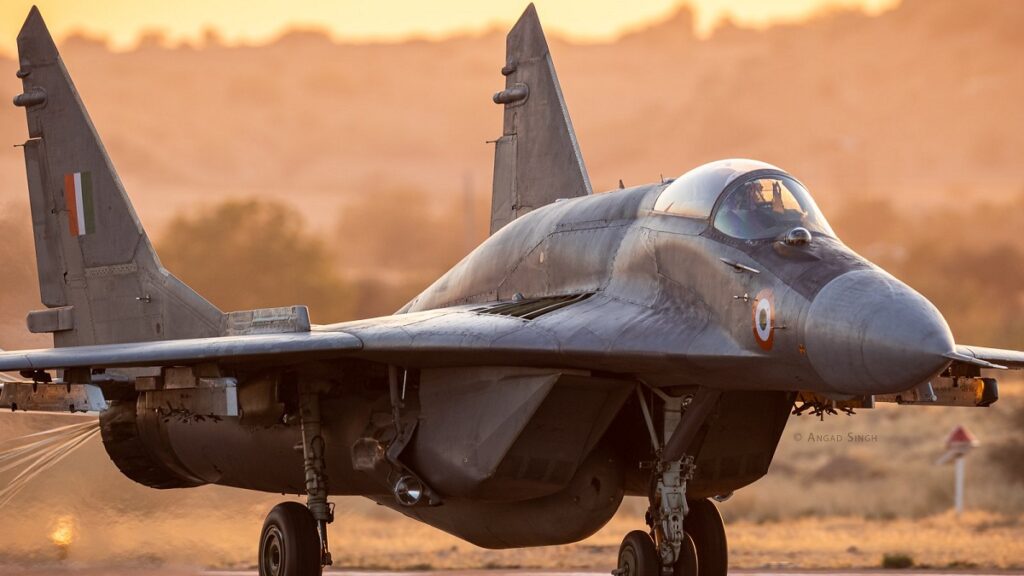IAF Strengthens Base: MiG-29 Fighter Jets Replace MiG-21 Squadron at Srinagar in Strategic Move

IAF Strengthens Base: MiG-29 Fighter Jets Replace MiG-21 Squadron at Srinagar in Strategic Move
The deployment of an upgraded squadron of MiG-29 fighter jets at the Srinagar air base marks a strategic move by India to enhance its defence capabilities and readiness along its northern borders, particularly in response to potential threats from both Pakistan and China.
The Tridents squadron, now called the ‘Defender of the North,’ replaces the MiG-21 squadron at the Srinagar air base. This change reflects India’s ongoing efforts to modernize and strengthen its air force, especially in regions facing complex security challenges. The MiG-29, known for its agility and combat capabilities, is being employed to provide a more robust defence posture in the northern region.
With tensions and border disputes existing on both the western and eastern fronts, deploying upgraded fighter jets showcases India’s commitment to safeguarding its territorial integrity and maintaining a credible deterrent against potential adversaries. This move highlights the country’s focus on maintaining a strong and well-equipped defence force to address a range of threats and challenges that may arise.
Squadron Leader Vipul Sharma, an Indian Air Force pilot, highlighted the strategic rationale behind deploying the upgraded MiG-29 fighter jets at the Srinagar air base. He pointed out that Srinagar’s central location in the Kashmir valley, its higher elevation compared to the plains, and its proximity to the border make it a key area for defence preparedness.

Sharma explained that the decision to station aircraft with a higher weight-to-thrust ratio and quicker response time is crucial in this region. The MiG-29’s attributes, including advanced avionics and long-range missiles, make it a fitting choice for these requirements. This enables the Air force to effectively address threats from both the Pakistani and Chinese fronts, ensuring a comprehensive regional defence strategy.
With their enhanced capabilities, the deployment of the MiG-29s reflects the Indian Air Force’s commitment to maintaining a formidable defence posture in areas of strategic importance, contributing to overall national security efforts.
The deployment of an upgraded MiG-29 fighter jet squadron at the Srinagar air base in India is a significant move to address security threats from Pakistani and Chinese fronts. The squadron, known as the “Tridents” and now referred to as the “Defender of the North,” has taken over the role traditionally held by a MiG-21 squadron at the Srinagar base, responsible for dealing with threats from Pakistan.
The strategic location of the Srinagar air base, situated in the centre of the Kashmir valley and at a higher elevation, makes it a crucial hub for defence preparedness. The MiG-29’s capabilities, including a higher weight-to-thrust ratio, quick response time, advanced avionics, and long-range missiles, align well with the requirements for securing Pakistani and Chinese fronts.

This deployment reflects India’s commitment to maintaining a robust regional defence posture, considering the complex security challenges neighbouring countries pose. By stationing advanced fighter jets at the Srinagar air base, India aims to enhance its readiness to respond effectively to potential threats and maintain stability along its borders.
The deployment of the Tridents squadron, now known as the “Defender of the North,” at the Srinagar air base represents a strategic shift in India’s defense posture. This squadron of upgraded MiG-29 fighter jets has taken over the role traditionally held by a MiG-21 squadron at the Srinagar base. The MiG-21 squadron had historically been responsible for addressing security threats from Pakistan.
By replacing the MiG-21 squadron with the advanced MiG-29 jets, India is demonstrating its commitment to modernizing its defense capabilities and adapting to evolving security challenges. The renaming of the squadron as the “Defender of the North” emphasizes its role in safeguarding India’s northern border regions, which are susceptible to threats from both Pakistan and China.
This move underscores India’s proactive approach to maintaining a strong defense posture and ensuring the readiness of its armed forces to counter any potential threats effectively. The deployment of upgraded fighter jets equipped with advanced technology enhances India’s capability to respond swiftly and decisively to security challenges emanating from multiple fronts.

Squadron Leader Vipul Sharma of the Indian Air Force has highlighted the strategic reasoning behind deploying the upgraded MiG-29 fighter jets at the Srinagar air base. He emphasized that Srinagar’s geographical location and elevation in the center of the Kashmir valley make it strategically advantageous for hosting aircraft with specific characteristics.
Sharma mentioned that Srinagar is better suited for hosting aircraft with a higher weight-to-thrust ratio due to its higher elevation than the plains. This characteristic allows for better performance at higher altitudes and in challenging terrain. Additionally, the proximity of Srinagar to the border necessitates aircraft with swift response times and advanced avionics, ensuring their effectiveness in countering threats.
The MiG-29 fighter jets fulfill these criteria, making them well-suited for deployment at the Srinagar air base. Their advanced capabilities, including better avionics and long-range missile systems, enable them to address security challenges from Pakistani and Chinese fronts effectively. Deploying these upgraded jets enhances India’s ability to maintain air superiority and respond promptly to any threats that may arise along its borders.
Deploying the upgraded MiG-29 fighter jets in the Srinagar air base brings several advantages over the previous MiG-21s responsible for defending the region. While the MiG-21s have served their purpose effectively, the MiG-29s offer enhanced capabilities that align with the evolving security dynamics.
One of the key advantages lies in the MiG-29’s advanced weaponry and technology. With upgrades, the MiG-29s are equipped with long-range air-to-air missiles and air-to-ground weaponry, significantly expanding their operational capabilities. These upgrades have been made possible through the emergency procurement powers granted to the armed forces by the Indian government.

Furthermore, the MiG-29s have been armed with lethal weaponry, bolstering their combat capabilities. The ability to carry and deploy advanced weaponry enhances their effectiveness in air-to-air and air-to-ground engagements. This firepower provides a significant advantage in countering threats from multiple fronts.
Deploying the upgraded MiG-29 fighter jets in the Srinagar air base brings several advantages over the previous MiG-21s responsible for defending the region. While the MiG-21s have served their purpose effectively, the MiG-29s offer enhanced capabilities that align with the evolving security dynamics.
One of the key advantages lies in the MiG-29’s advanced weaponry and technology. With upgrades, the MiG-29s are equipped with long-range air-to-air missiles and air-to-ground weaponry, significantly expanding their operational capabilities. These upgrades have been made possible through the emergency procurement powers granted to the armed forces by the Indian government.
Furthermore, the MiG-29s have been armed with lethal weaponry, bolstering their combat capabilities. The ability to carry and deploy advanced weaponry enhances their effectiveness in air-to-air and air-to-ground engagements. This firepower provides a significant advantage in countering threats from multiple fronts.

In addition to offensive capabilities, the MiG-29s have been outfitted with electronic warfare capabilities, allowing them to jam the capabilities of enemy aircraft during conflicts. This electronic warfare capability can disrupt communication systems, radar functionality, and other crucial aspects of enemy aircraft, further tipping the balance in favor of the Indian Air Force.



